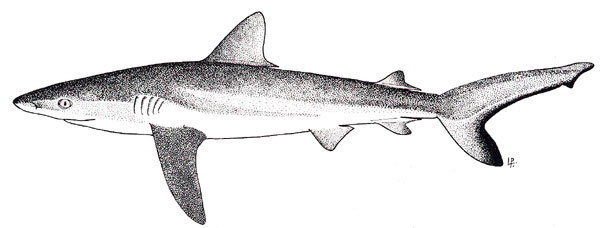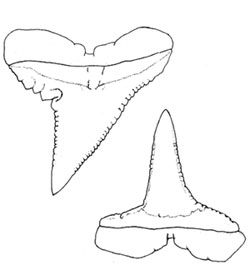Similan Marine Life – Grey Reef Sharks
Wicked Diving, Khao Lak brings you more of our Similan Marine Life articles with this one on the Grey Reef Shark.
While they are around, we don’t see them as frequently as some of our other sharks – Leopards and Black tips. this is more to do with the geology than anything else. They tend to be a bit more open and in sites we don’t dive as often or that we spend as much time in. Such as Deep off Christmas point and off Koh Tachai
They are also pretty timid when it comes to humans.
- Order: Carcharhiniformes
Family: Carcharhinidae
Genus: Carcharhinus
Species: amblyrhynchos -
- Habitat
-
GREY REEF SHARK
Order: Carcharhiniformes
Family: Carcharhinidae
Genus: Carcharhinus
Species: amblyrhynchos -
- Habitat
Taxonomy
The grey reef shark was originally described as Carcharias amblyrhynchos by Bleeker in 1856. He later changed this name to the currently valid name of Carcharhinus amblyrhynchos. The genus name Carcharhinus is derived from the Greek “karcharos” meaning sharpen and “rhinos” meaning nose. Synonyms used in previous scientific literature that refer to the grey reef shark include Carcharias nesiotes Snyder 1904, Carcharhinus menisorrah Whitley 1944, Galeolamna fowleri Whitely 1944, Galeolamna turfiensis Whitely 1949, Galeolamna coongoola Whitely 1964, and Carcharhinus wheeleri Garrick 1982.
Common Names
English language common names include grey reef shark, blacktail reef shark, black-vee whaler, bronze whaler, gray reef shark, gray shark, gray whaler shark, longnose blacktail shark, shark, and whaler shark. Other common names from across the world include ‘anga (Tongan), bagea totoho (Gela), grijze rifhaai (Dutch), grys rifhaai (Afrikaans), ikan yu (Malay), jarjur (Arabic), kortneus-swartsterthaai (Afrikaans), mago (Niuean), malie-aloalo (Samoan), marracho enlutado (Portuguese), nga-man-nee (Burmese), pako mej (Marshallese), pating (Tagalog), qio dravu (Fijian), raira (Tahitian), requin à queue noire (French), requin bar (French), requin blanc (French), requin dagsit (French), requin gris (French), te alava (Tuvaluan), te bakoanimarawa (Kiribati), tiburón coralero rabinegro (Spanish), and tiburón de arrecifes (Spanish).
Geographical Distribution The grey reef shark is limited to the Pacific and Indian Oceans. In the Indo-Pacific, it is found in the waters off Madagascar and in the Mauritius-Seychelles region. In the western Pacific Ocean, this shark ranges from southern China to northern Australia and the Tuamoto Archipelago. It is one of the most common reef sharks in the Pacific Ocean, along with the blacktip reef shark (Carcharhinus melanopterus) and the whitetip reef shark (Triaenodon obesus). It is also found in the Indian Ocean, off the coast of India to South Africa, including the Red Sea. In this region it is often referred to as Carcharhinus wheeleri.
- Biology
- · Distinctive Features
- This shark is medium to large in size, growing up to 8.4 feet (2.6 m) in length. It has a long, broadly rounded snout and large eyes. It does not have an interdorsal ridge running between the first and second dorsal fins. The origin of the first dorsal fin is over or just in front of the free rear tips of the pectoral fins. The first dorsal fin is semifalcate with a narrowly rounded or pointed tip. The second dorsal fin originates over the anal fin origin. The pectoral fins are large, narrow, and falcate in shape with narrowly rounded or pointed tips.
 |
- · Coloration
- The dorsal side of the grey reef shark ranges from dark gray to bronze gray, paling to a white ventral side. The entire trailing edge of the caudal fin has a distinct wide black margin. The pectorals, second dorsal, anal, and pelvic fins have black or dusky tips while the first dorsal fin is either entirely gray or irregularly edged with white.
The blacktip reef shark can be distinguished from the grey reef shark by the black-tipped first dorsal fin
source: FAO Species Catalogue, Vol. 4 – Sharks of the World
The grey reef shark may be confused with the blacktip reef shark (C. melanopterus). The blacktip reef shark can be distinguished by the distinct black tip on the first dorsal fin as well as black tips on the remaining fins.Grey reef shark upper and lower teeth
source: FAO Species Catalogue, Vol. 4 – Sharks of the World
- · Dentition
- The teeth are triangular and serrated with 13-14 teeth in each jaw half. The upper teeth are narrow and serrated, semi-erect to oblique in shape with high cusps. The crown feet have coarse serrations. The lower teeth are erect or semi-oblique with narrowly serrated cusps.
- ·Size, Age, and Growth
- The grey reef shark may grow to a maximum size of 8.4 feet (2.6 m) in length and to weights of up to 74.3 pounds (33.7 kg). However, the average size of a grey reef shark is less than 6.6 feet (2 m) in length. The maximum reported age of this shark is about 25 years. Males mature at lengths of 4.3-4.9 feet (1.3-1.5 m) and females mature at 3.9-4.6 feet (1.2-1.4 m) in length, both corresponding to an age of approximately 7 years.
- Food Habits
- Reef fishes, along with smaller quantities of cephalopods (squid and octopus), and crustaceans (shrimp and lobster), provide the majority of the grey reef sharks’ prey. Reef shark prey also includes bony fish including cowfish, surgeonfish, and butterflyfish. The grey reef shark will also prey on young individuals of their own species. Most of the feeding activity occurs during the nighttime hours which is also this shark’s peak activity period.
- · Reproduction
- The grey reef shark is a viviparous species, which refers to reproduction when the embryos are nourished with a yolksac placenta during gestation inside the mother. The gestation period lasts approximately 12 months, followed by live birth of a litter of 1-6 pups. Each pup measures between 15.7-23.6 inches (45-60 cm) in length at time of birth.
- Predators
- Predators of the grey reef shark include larger sharks such as the silvertip shark (Carcharhinus albimarginatus).
- Parasites
- The grey reef shark is host to parasitic copepods including Nemesis robusta (gill filaments) and Alebion carchariae (snout, fins, body). These copepods were documented on specimens from waters off western Australia. Ganthiid isopod larvae have also been reported on the gills of this shark.
The grey reef shark may be taken by longline shark fisheries and are valued for their fins that are used in shark fin soup. It is also utilized for human consumption and fishmeal. However, this species often occurs out of the range of most commercial shark fisheries.
Conservation
The gray reef shark, Carcharhinus amblyrhynchos, is listed as Lower Risk (LR/nt) on the IUCN Red List of Threatened Species:
LOWER RISK (LR) – A taxon is Lower Risk when it has been evaluated, does not satisfy the criteria for any of the categories Critically Endangered, Endangered or Vulnerable. Taxa included in the Lower Risk category can be separated into three subcategories:
1. Conservation Dependent (cd). Taxa which are the focus of a continuing taxon-specific or habitat-specific conservation program targeted towards the taxon in question, the cessation of which would result in the taxon qualifying for one of the threatened categories above within a period of five years.
2. Near Threatened (nt). Taxa which do not qualify for Conservation Dependent, but which are close to qualifying for Vulnerable.
3. Least Concern (lc). Taxa which do not qualify for Conservation Dependent or Near Threatened.
The grey reef shark is vulnerable to overfishing due to its restricted habitat, small litter size, and relatively late age of maturity. These factors, along with an increase in unmanaged fishing pressure, make this shark vulnerable to threats. However, at this time there is not enough data on the grey reef shark to analyze the status of populations.
The grey reef shark is currently listed by the World Conservation Union (IUCN) as “Near Threatened”. More fisheries data is required for future assessment. The IUCN is a global union of states, governmental agencies, and non-governmental organizations in a partnership that assesses the conservation status of species.
Danger to Humans
Although it is one of the most aggressive sharks, the grey reef shark will usually only attack a person when it is threatened. Even so, it has been responsible for 7 unprovoked attacks resulting in no fatalities according to the International Shark Attack File. If cornered or threatened is some way, the grey reef shark will display threat behavior explicitly. It will raise its snout, depress the pectoral fins, and arch its back while swimming with an exaggerated sway. If the threat continues, the shark will move with lightening speed, delivering quite bites prior to retreating. Although the bites are often serious, they are rarely fatal. This species of shark is also more likely to attack while solitary rather than schooling perhaps due to an increased feeling of vulnerability.
Khao Lak diving
Similan Liveaboards
Dive Safely
0 comments:
Post a Comment